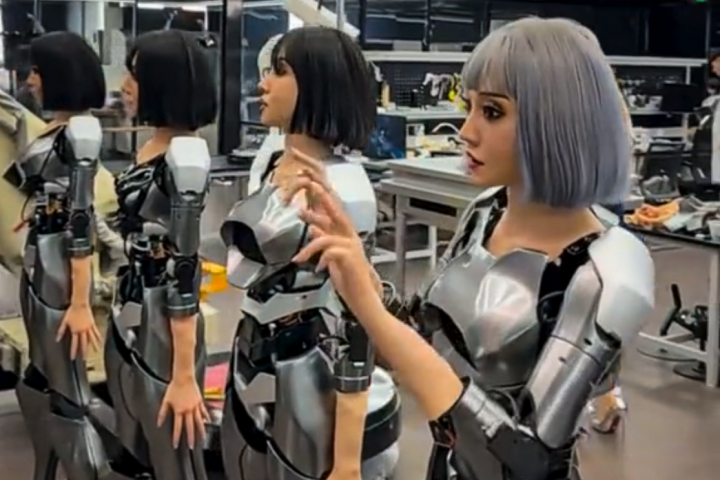September 4, 2008 Ten years ago the smart fortwo was launched to a world market decidedly unsure about the highly unusual two-seater that was just two and a half metres in length. It could fit into less than half a parking space, took two people and their luggage quite comfortably and had impressively low fuel consumption and minimum carbon dioxide emissions. The degree of foresight in the design will be judged most kindly by history given the issues of global warming, road congestion, and the effect the laws of supply and demand have had on fuel pricing. Throw in the car’s safety and technical innovations and a design that combines functionality with joie de vivre and the smart fortwo deserves a warm round of applause on its automotive coming of age.
After ten years on the market the smart fortwo can be proud of its achievements. Since the first model was introduced in 1998 in excess of one million have been produced. Whereas the smart fortwo was initially only offered for sale in Germany and eight further European countries, today it is available in 37 countries worldwide, and since January of this year, also in the USA. From mid 2009 the smart fortwo will also go on sale in China as the car is practically tailor-made for the growing number of lifestyle-oriented small car customers in a country with numerous megacities. In China, too, fashion-conscious young people want an agile, trendy vehicle for their flexible urban lifestyles in order to set themselves apart from others.
Dr. Dieter Zetsche, CEO of Daimler AG and Head of Mercedes-Benz Cars says "In China we are seeing growing interest from customers in our high-quality and low consumption smart fortwo. I am sure that many cosmopolitan customers in China's cities will soon come to love its unique concept. For in addition to its outstanding safety equipment and the typical design, the fortwo naturally also boasts top quality and reliability."
The second generation continues the success story
The second generation of the smart fortwo has been on the market since the spring of 2007. It clearly continues the tradition of its predecessor and the fascinating smart story. The car continues to focus on the core brand values of innovation, functionality and joie de vivre – a kind of declaration of automotive independence for many smart drivers.
Anders Sundt Jensen, responsible for the smart brand says "The new fortwo is even more comfortable, agile, safe and environmentally friendly than its successful predecessor was. The new fortwo does not only appeal to smart fans as a lifestyle-oriented vehicle, but also on account of its unparalleled economy."
A trend-setting appearance with new ideas
The smart fortwo embodies a completely new, intelligent concept for automotive individuality and this is also reflected in its appearance with a fresh, young, modern yet sophisticated design language. And although there were no automotive role models that the designers could have referred to, the two-seater set visual trends and created its own class thanks to a whole host of unusual ideas. In the past ten years the smart has become an automotive icon and it combines extremely varied demands on function, aesthetics and safety technology to create something completely new.
The result is a bold design that confidently makes structural elements such as the tridion safety cell a significant part of the car's styling. There could hardly be a more eloquent expression of that most basic principle of design, that form must follow function.
A further feature is the mix of materials consistently realised in a production vehicle for the first time with a hard core (tridion) and a flexible and functional shell consisting of thermoplastic bodypanels. In this way smart sets new trends and its shape alone gives it a likeable appearance whilst still being taken seriously.
Safety – a hard shell for the passengers
The smart fortwo is seen as a real trendsetter in terms of safety equipment in small cars. The tridion safety cell protects its occupants like the hard shell around a nut. In this way it also meets the extremely strict standards of Mercedes-Benz Cars. Moreover, it complies with American crash requirements and attained top ratings in US-SINCAP and EuroNCAP (four stars).
The basic equipment of the smart fortwo includes full-size airbags for driver and passenger, belt tensioners and belt-force limiters. Head/thorax side airbags are available as an option. esp® also comes as standard. This is not even available for an additional charge in many other small cars. The esp® includes hill-start assist and the anti-lock braking system abs. A hydraulic brake assist function is also part of the standard specification.
User-friendly gear shifting as a standard feature
The smart fortwo is fitted with an automated manual five-speed transmission (softip) as a standard feature. This means that there is no clutch pedal. To shift up a gear, the shift lever on the centre console merely requires a brief tap forwards, while pulling it back shifts down a gear. The passion version features the softouch automatic gear programme as standard, which enables the driver to switch from manual gear shifting (softip) to an automatic gear programme (softouch) by pressing a button on the gear knob. Steering wheel gearshift is available as an optional extra.
The diesel version of the smart is the current CO2 champion
State-of-the-art compact three-cylinder petrol engines with a capacity of 999 cc are installed at the rear of the smart fortwo. In Western Europe customers can currently choose from two naturally aspirated engine versions with mhd (micro hybrid drive) technology delivering 45 or 52 kW (61/71 hp) respectively, and a turbo engine rated at 62 kW (84 hp). A three-cylinder turbo engine is also at the heart of the 72 kW (98 hp) smart fortwo BRABUS.In addition, a diesel variant is available – the smart fortwo cdi – which is the world champion in low CO2 emissions. The 33 kW/45 hp two-seater car consumes just 3.3 litres of fuel (NEDC) per 100 kilometres on average, which means that it can travel approximately 1000 kilometres without refuelling.
This was confirmed by the Italian car magazine “Quattroruote” with a 1,000km drive from Rome to Salzburg. At just 88 grams per kilometre it has the lowest CO2 emissions worldwide!
In addition, to further reduce petrol engine CO2 emissions, the smart fortwo mhd (micro hybrid drive) with an intelligent start/stop system and a 52 kW/71 hp engine has been available to customers in Europe since the autumn of 2007. This version automatically shuts down the engine as soon as the car's speed falls below 8 km/h and the brake pedal is pressed. The engine starts again as soon as the driver releases the brake pedal. The standard consumption is reduced by approximately 0.4 litres – from 4.7 litres to around 4.3 litres per 100 kilometres. Average CO2 emissions are reduced from 112 grams to 103 grams per kilometre.
From October 2008 both the 52 kW/71 hp smart fortwo and the petrol version with a 45 kW/61 hp engine will be fitted with the user-friendly start/stop system as standard.
At the end of 2007 smart started a pilot project in London with the smart fortwo electric drive. Together with selected fleet customers start is testing 100 vehicles with electric drive there to gain real-world experience. Vehicles with electric drive are particularly quiet, highly efficient and produce no local emissions. As a zero-emission car the smart fortwo electric drive enjoys tax advantages and is exempt from local restrictions such as the congestion charge that applies in the British capital. This makes it a particularly interesting and environmentally friendly alternative in urban population centres. Series production of an electrically driven smart of the current generation with lithium-ion battery technology is planned for 2010. Lithium-ion technology has decisive advantages over other types of batteries, including extremely compact dimensions, much higher performance, a long life and high reliability.
Award-winning climate friendliness and economy
Protection of the environment is an integral part of all the fields of activity ofthe smart brand. This does not only apply to the production facility in Hambach, France - it also applies to the smart fortwo itself, from the development and production of the vehicle to its operational period and later recycling. The internationally renowned Öko-Trend environmental institute has acknowledged the smart fortwo's top position in matters relating to environmental friendliness and awarded it the coveted environmental certificate for cars. Moreover, the smart fortwo has been awarded the ÖkoGlobe by one of Germany's largest insurance companies.
What's more, several renowned trade journals have certified the innovative two-seater's unparalleled economy and environmental friendliness. They came to the unanimous conclusion independently of one another: no car is cheaper to drive.
Production – European model plant in Hambach
The smart fortwo is produced in a purpose-built plant in the French town of Hambach – a clear commitment to Europe as a production location. The smart plant, also called "smartville", started production in 1997. System partners located on site supply partly prefabricated modules straight to the assembly line. In some cases they fit their prefabricated modules in the smart themselves. This has enabled transport and logistics costs to be reduced to a minimum. Flexibility, just-in-time and minimum delivery times at all levels are among the exemplary aspects of the process. This enables the smart fortwo to be assembled in only about three hours.
Success story – ten years of the smart fortwo
As early as the early 1970s developers at Mercedes-Benz started working on the "car of the future" and considering new revolutionary approaches that eventually led to the concept of an ultra-compact car two and a half metres long. Several years passed until the pioneering safety concept was developed that allowed the high level of safety typical of Mercedes to be realised in an extremely short car.
In 1989 Nicolas G. Hayek, the inventor of the Swatch watch, announced plans to launch a small city car on the market. To realise this idea Nicolas Hayek turnedto Mercedes-Benz as an experienced partner. Together, both partners founded Micro Compact Car AG with headquarters in Biel, Switzerland.
Finally, in 1997 the smart city coupé celebrated its world premiere at the Frankfurt International Motor Show. Production and sales started in 1998. In the same year, smart became a wholly-owned subsidiary of Daimler-Benz AG (now Daimler AG).
Further models and series
In the following years the smart brand launched the sports cars smart roadster and smart roadster-coupé (2003) and the four-seater smart forfour (2004) on the market. Following the decision to stop production of the smart roadster at the end of 2005 and of the smart forfour mid 2006, smart fully concentrated on the smart fortwo.
The innovative car brand has demonstrated its creative energy time and again with special vehicle models. These include the smart crossblade in 2002 that had neither doors, a roof nor a windscreen, and the smart crosstown show car in 2005 which was equipped with forward-looking hybrid drive.
Ten years after the first pilot production vehicles rolled off the production line, in 2007 the new smart fortwo was launched on the market. This model builds on the strengths of the visionary classic and further develops its virtues.
Already a classic
It is undisputed that the smart fortwo's unique character has already made it an automotive classic, despite its young years. In 2002 the smart fortwo was the only vehicle to be included in the permanent collection of the world-famous Museum of Modern Art in New York whilst still in series production as a "contemporary design classic of the last decade of the last century".




